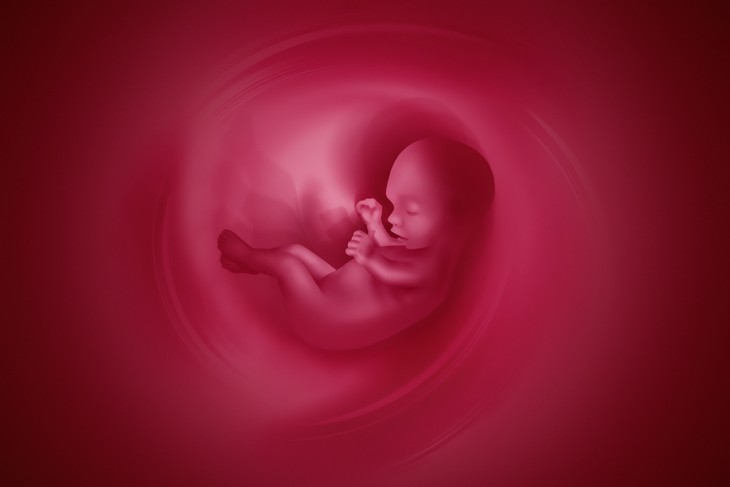By Samuel Aquila
Oscar Wilde’s The Picture of Dorian Gray is the sort of timeless morality tale students read as an antidote, or at least an objection, to the hedonism that seems to follow naturally from youthful ideas about immortality.
The story is familiar to many: Dorian Gray is a narcissist who wishes that a portrait of him—his copy in paint—would age in his place. His wish comes true, and though his life is corrupted by a pursuit of pleasure, only his painted visage bears the effects. Dorian himself is visibly unscathed, though the novel’s fatal climax exposes a soul rendered ugly by a life of egoistic debauchery.
The Picture of Dorian Gray took on a particular prescience yesterday. Scientists at Oregon Health and Science University reported a successful incidence of cloning, one that relied on the same method that researchers used 17 years ago to clone Dolly the sheep. This week, the cloned embryos were not sheep; they were human beings. The work is heralded as the success of “therapeutic cloning.”
We will hear a lot about therapeutic cloning in the news this week. Researchers distinguish between “therapeutic cloning,” which creates embryos in order to harvest their stem cells, and “reproductive cloning,” which has the intention of a live birth. The Oregon researchers insist that theirs was not an act of “reproductive cloning.”
But the distinction is spurious. Both types of cloning are reproductive. Both bring a new human being into existence. In fact, so-called therapeutic cloning is the more heinous because the process is intended to create life, exploit it, and then destroy it.
Consider what the cloning breakthrough means. Scientists have discovered how to create perfect human copies, to be used for the sole purpose of growing tissue in the effort to combat disease, and then these copies will be destroyed. From a scientific perspective, this breakthrough could solve, among other problems, that of tissue rejection or a delay that renders organ transplant unfeasible. From the standpoint of materialism, there has been no greater advance in regenerative medicine. Through therapeutic cloning, a person’s health can be enhanced immeasurably—and only the copy, the embryo, will suffer the effects.
The problem is that the embryo is not merely a copy. The embryo is not an extension of the patient who donated the DNA, a cell bank to be utilized without consequence. The embryo, though genetically identical, is a new manifestation of human life, endowed by its very being with dignity. The embryo is a human being.
The humanity of the cloned embryo will be aggressively denied in the weeks to come. Though human life demonstrably begins at the embryonic stage of development, the created embryo will be presented as a collection of tissue, a biological tabula rasa from which organs can be grown. Scientists will seek more funding, and the Dickey Amendment, which prohibits federal funding for the creation of cloned embryos, will be attacked.
In 1968, Pope Paul VI warned in Humanae Vitae that the sexual revolution, beginning with a cultural acceptance of the contraceptive mentality, would lead to a wholesale denial of human dignity and the family. Now we are cloning embryos to destroy them. It will be only a matter of time before therapeutic cloning will cede to reproductive cloning. If we don’t seriously contemplate the ethical consequences of therapeutic cloning now, eventually cloned human beings will be born in America.
The “progress” of therapeutic cloning will not be victimless. But the victims will be hidden from sight, tucked away in the dark like Dorian’s decaying portrait.
The first class of victims, and the ones most pressing on our consciences, will be the embryos—brought into existence to be used, and then killed. If nurtured, as in a womb, these embryos would grow into fetuses, and then infants, and then children. They are, no matter their size, human beings. But because they are small and have no voice and offer such tremendous possibility, they will be ignored.
The embryos will be a class of human beings created only to be exploited and discarded.
The second class of victims will be the rest of us. We will be the ones remaining healthy and making progress and defeating disease—all by means of killing. We will be the ones who appear beautiful, while our souls embrace the most harrowing kind of social utilitarianism and darkness. If we ignore the problem, as we have done with contraception and abortion, we will only sink into a more violent depravity, like the one that befell vain Dorian Gray. We will be the ones whose portrait grows ever uglier, and who grow ever closer to madness.
Samuel Aquila is archbishop of the Archdiocese of Denver, Colorado.
This article has been reprinted with permission from National Review Online, May 17, 2013. © 2013 by National Review, Inc. It can be found at http://www.nationalreview.com/article/348590/‘therapeutic-cloning’-human-embryos-samuel-alito. Authorized by: Lucy Zepeda.



